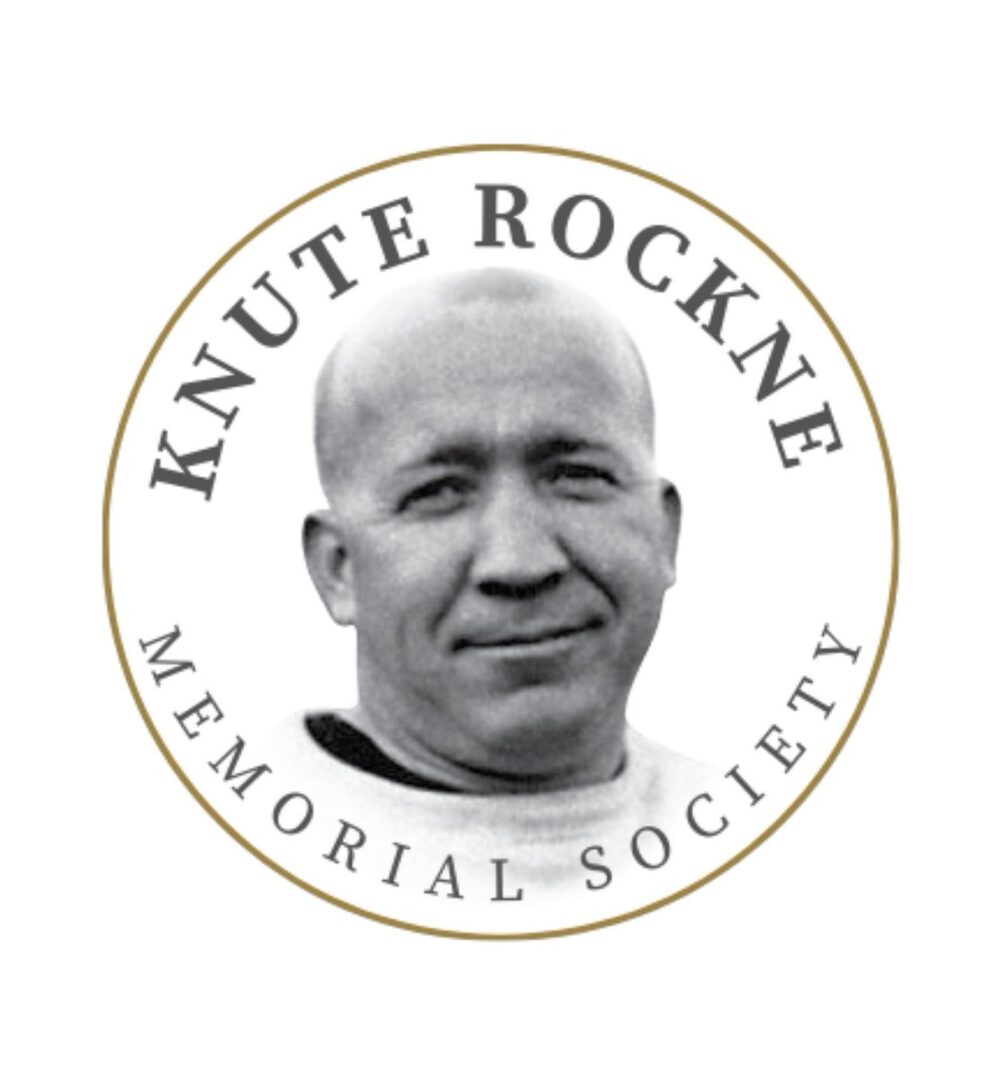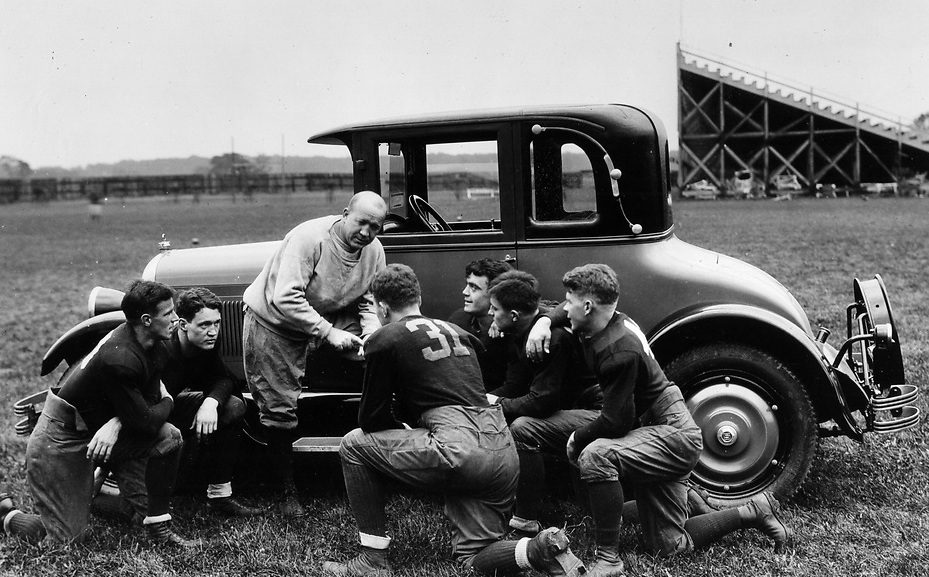In March of 1931, the Notre Dame Athletic Board discussed the continuation of the series with the University of Southern California, which had now been played five times, including trips to California in 1926, 1928 and 1930. The series was immensely popular, with huge crowds at Chicago’s Soldier Field in 1927 and 1929.
It was time to renew the agreement, Knute Rockne reported to the board. If Notre Dame didn’t approve it soon, the risk of losing the rivalry loomed. University vice president Father Michael Mulcaire, who had recently challenged Rockne and his methods, argued against continuing the series.
“The game involves too much train travel,” Mulcaire said, implying that football players missed too much school. “But we go out there only every other year,” Rockne replied. “Anyway, in a few years all teams will be giving up trains for air travel.”
“Have you lost your senses?” Mulcaire responded, clearly agitated. “We will never allow such a thing!”
“It probably sounds far-fetched now,” Rockne allowed, “but I see the day coming when most college teams will be going by air exclusively. As a matter of fact, I’m flying to Los Angeles next week.”
“You’re out of your mind,” Mulcaire sniffed.
Rockne the Innovator
For Rockne, the future was to be embraced, not denied. He knew no other way.If there was an innovation to do something quicker, more efficiently, or more thoroughly, he wanted to know more. Rockne had been a student of flight almost since his days as a teenager spent reading of the Wright brothers and their experiments at Kitty Hawk.
In the past 20 years, traveling all directions the length and breadth of the country, he had logged countless miles and endless hours on trains, breathing the soot from steam locomotives and being awakened by lurching starts and stops. As much as he enjoyed chatting with fellow passengers, the trips became long and difficult, especially when phlebitis came along. The advantages of traveling by air were almost too obvious. He had already taken several flights, and he looked forward to many more.
Air travel seemed especially appealing to Rockne as he carried out his duties for Studebaker Corp., traveling to speak to sales meetings 20 or more times a year, in locations from coast to coast. Earlier in March, Albert Erskine, president of Studebaker and chairman of the board of lay trustees at Notre Dame, appointed Rockne manager of sales promotion for Studebaker. Erskine was enthusiastic about the plans he approved in 1930 for a new car line named after the coach.
Paul Hoffman provided Rockne with his own office at company headquarters, next to that of Jim Cleary, vice president of sales. Just down the hallway, former Notre Dame star athlete Paul Castner had his office; he was delighted to have the coach nearby, though it was unclear how often Rockne would occupy his office. It was also uncertain how the new Studebaker position would affect his “day job” as athletic director and head football coach at Notre Dame. If Father O’Donnell even knew of the promotion, his power to intervene in Rockne’s affairs was negligible.
Rockne’s Trip to California
Rockne was also mulling an interesting offer from Universal Pictures in California: $50,000 to appear in a motion picture version of the Broadway musical Good News. The feel-good story opened on Broadway in 1927 and wowed audiences with its energy and cheer in telling the story of romance, academics, and football at a fictional college. Rockne, in an attempt to gain presidential approval of his role in the project, wrote O’Donnell a letter in which he downplayed his own interest in appearing in the film, but noted that perhaps he could influence Universal to create a movie more directly about Notre Dame.
“There might be a chance to put out a picture that might be instructive and educational as regards Notre Dame in every sense of the word,” Rockne noted. A trip to Los Angeles to discuss the film project would be necessary. Rockne quickly thought of the other business that could be conducted on such a journey.
His schedule for the Los Angeles trip continued to fill when he agreed to join Will Rogers as speakers for a Los Angeles Junior Chamber of Commerce luncheon on Thursday, April 2. Rockne seldom passed up a chance to join his great pal Rogers, if it was at all possible. This would be a great time to get together, after concluding his business with Universal pictures. He also accepted an appearance at a sporting-goods store opening for Wilson Sporing Goods. And there would be informal meetings, to possibly set up another summer coaching school in the area. Tom Lieb, his good friend and former Notre Dame player and assistant coach, now coach and athletic director at Loyola University in Los Angeles, would meet him at the airport and help coordinate his travels in and around Los Angeles.
Honoring Rockne After His Death
Monday morning, March 30, at the Studebaker offices, Rockne went into Jim Cleary’s office to check on an audio recording he had made for the dealers. The coach didn’t have much time to visit, owing to all the details he was trying to wrap up before heading for Los Angeles. On his return trip, he would again stop in Kansas City, this time to speak at the winter sports awards banquet at his sons’ school, Pembroke, on Sunday, April 12.
Monday afternoon, Rockne was on campus, chatting with several of his former players. In the course of conversation, ex-lineman Bill Jones, now the freshman coach, asked Rockne about his upcoming trip. Rockne detailed his itinerary: train to Chicago, train to Kansas City, then airplane to Los Angeles. “But why can’t you go by train?” Jones asked. “They’re a lot safer.”
“No, they’re not,” Rockne replied. “You don’t read your statistics. Anyway, I want to save time. Bonnie and the kids are still down in Florida, and I want to be back home to greet them when they return. Flying to and from California is the only solution to the time problem.” Jones and others wished Rockne well, and the coach went on his way.
Less than 24 hours later, on Tuesday, March 31, the world learned of the airline accident in the Flint Hills of eastern Kansas in which the severely compromised plywood core of a Fokker tri-motor plane was unable to withstand severe weather conditions and subsequent extreme flying measures. Rockne and seven others perished instantly.
Studebaker ultimately went ahead with its plans for a Rockne automobile, producing nearly 40,000 cars in a two-year run. But 1932-33 were the darkest years of the Great Depression and when Studebaker Corp. was forced into receivership, the Rockne was sacrificed. The last Rockne “10†rolled off the assembly line in July, 1933. They remain a valued collectible car today.
Portions excerpted from Coach For A Nation: The Life and Times of Knute Rockne, published in 2013 by Great Day Press. All rights reserved.

